When it comes to owning a Buck knife, not only do you possess a practical tool, but you also hold a piece of history in your hands. Understanding the age and manufacturing date of your Buck knife adds an extra layer of appreciation to its value and significance. In this guide, we will embark on a journey to demystify the process of how to date a Buck knife. From deciphering unique markings and features to exploring historical records and expert insights, we will equip you with the knowledge and techniques necessary to unveil the story behind your Buck knife’s creation. So, let’s dive into the realm of Buck knives and discover the fascinating art of determining their age and origin.
History of Buck Knife
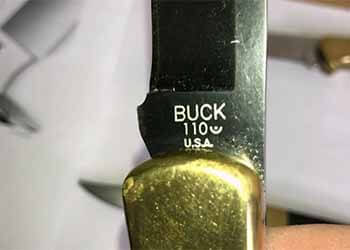
Buck Knives, a renowned American knife manufacturer, has a rich and storied history that spans over a century. The company was founded in 1902 by Hoyt H. Buck, a blacksmith from Kansas. Hoyt’s goal was to create superior knives that would withstand the rigorous demands of everyday use.
In the early days, Buck Knives primarily focused on manufacturing hunting and fishing knives, known for their durability and sharpness. However, it was in 1964 that Buck Knives achieved significant recognition and success with the introduction of the iconic Model 110 Folding Hunter.
The Model 110 Folding Hunter revolutionized the knife industry with its innovative lockback design, which provided enhanced safety and reliability. It became an instant classic and is still in production today, making it one of the most recognizable folding knives worldwide.
Over the years, Buck Knives continued to innovate and expand its product line, catering to various applications and user preferences. The company’s commitment to quality craftsmanship, attention to detail, and use of high-quality materials earned it a loyal customer base and a reputation for producing reliable, functional, and long-lasting knives.
Buck Knives remains a family-owned business, with the fourth and fifth generations of the Buck family actively involved in its operations. The company’s headquarters is located in Post Falls, Idaho, where its skilled craftsmen continue to produce knives that uphold the legacy of quality and tradition.
Today, Buck Knives offers a wide range of knives, including hunting knives, pocket knives, tactical knives, and outdoor utility knives. Each knife is crafted with meticulous care, combining traditional techniques with modern manufacturing processes.
Buck Knives’ enduring presence in the industry can be attributed to its unwavering commitment to excellence, innovation, and customer satisfaction. With over a century of history behind it, Buck Knives has solidified its position as one of the most respected and trusted knife manufacturers worldwide.
Related:
How to Date a Buck Knife?
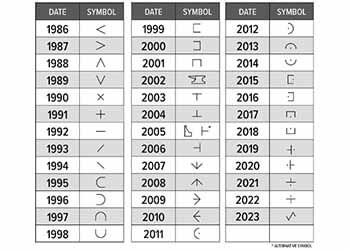
To determine the age of your Buck knife and unveil its fascinating history, there are several methods you can employ. However, we will categorize 2 ways to date a buck knife. They are:
- Physical Examination
- Analytical Research
Let’s now discuss both of them eventually. It would be really fun to know how to date a buck knife.
Physical Inspection
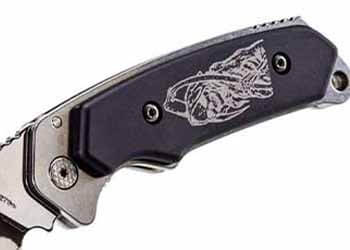
Stamp Recognition of a buck knife
Stamp recognition is an important aspect when dating and identifying Buck knives. The tang stamp, located on the tang or base of the blade near the handle, contains crucial information about the knife’s age and origin. Here are some key aspects to consider when recognizing the stamp on a Buck knife:
- Shape and Design: The tang stamp on Buck knives has undergone various changes over time. Familiarize yourself with the different shapes, lettering styles, and design elements used in different eras. This includes variations in the Buck logo, the addition or removal of specific words, or any unique features.
- Lettering and Font: Pay attention to the font style, size, and spacing of the letters in the tang stamp. These details can provide important clues about the knife’s age and production period. Research examples of tang stamps from different time periods to compare and identify patterns.
- Wordings and Placement: Note any words or phrases present in the tang stamp, such as “Buck,” “Buck Knife,” or model names like “Folding Hunter” or “Ranger.” Observe the position and arrangement of these words, as they may vary depending on the knife’s vintage.
- Additional Markings: Some Buck knives may have additional markings or codes, such as model numbers, patent numbers, or country of origin. Take note of these markings as they can help narrow down the knife’s production era.
When examining the tang stamp, it’s advisable to compare it to reliable resources, including Buck Knives’ official documentation, collector guides, or online forums dedicated to knife enthusiasts. These sources can provide detailed information about the tang stamps used in different periods, making it easier to date and authenticate your Buck knife based on its stamp.
Symbol Recognition
Symbol recognition is another important aspect when identifying and understanding the markings on a Buck knife. While tang stamps often contain words and lettering, symbols can also appear on the knife and provide valuable information about its origin and characteristics. Here are some key points to consider when recognizing symbols on a Buck knife:
- Company Logos: Buck Knives has used different logos throughout its history, and recognizing these logos can help determine the knife’s age. The Buck Knives logo typically features an image of a jumping buck, which may vary in design, size, and placement. Research and compare the different iterations of the Buck logo to identify the era of your knife.
- Trademarks and Registered Symbols: Look for trademark or registered symbols that may be present on the knife. These symbols indicate that the design or name associated with the knife has legal protection. Familiarize yourself with Buck Knives’ registered trademarks and symbols to determine the significance of these markings on your knife.
- Specialized Symbols or Icons: In some cases, Buck knives may feature specialized symbols or icons that denote specific models, collaborations, or limited editions. These symbols can be unique to certain knife series or partnerships and can help identify the knife’s characteristics or special features.
- Decorative Engravings: Buck knives may also have decorative engravings, such as intricate patterns, wildlife motifs, or personalized markings. While these engravings may not directly provide information about the knife’s age or origin, they can contribute to its aesthetic appeal and individuality.
Here is a chart that can tell you about the knives manufactured from 1961- 86.
| Date | Symbol |
| 1961-67 | BUCK |
| 1967-72 | BUCK, USA |
| 1972-86 | BUCK 110, USA (Added Model #) |
When examining symbols on a Buck knife, it is beneficial to consult reliable sources such as Buck Knives’ official documentation, collector resources, or dedicated knife forums. These references can provide detailed information about the symbols used by Buck Knives throughout its history and assist in accurately identifying and understanding the significance of symbols on your knife.
Dots on the Buck Knives
The presence of dots on Buck knives can hold significance in determining their age and manufacturing period. These dots, commonly known as “date codes” or “folding date stamps,” are small circular marks typically located on the tang or backside of the blade. Here’s what you need to know about dots on Buck knives:
- Dating System: Buck Knives implemented a dot system for a specific period of time to indicate the manufacturing year of their knives. Each dot corresponds to a particular year, enabling collectors and enthusiasts to estimate the knife’s age. The system started in 1986 and continued until 2004.
- Placement and Format: The dots are typically placed on the tang or backside of the blade, near the handle. They are arranged in a specific pattern, usually in a straight line or a formation that represents the year. For example, three dots in a triangular formation might indicate the year 1999.
- Interpretation: To accurately interpret the dots, it’s essential to refer to a reliable Buck knives date code chart or resource specific to the dot system. These references provide a comprehensive breakdown of the dot patterns and corresponding manufacturing years.
- Post-2004 Knives: Buck Knives discontinued the dot system after 2004, so knives produced after that year do not have dots for dating purposes. Instead, other methods such as tang stamps or serial numbers may be used to determine their age.
However, based on the dates, the Buck Knife can be categorized into 3 periods on the basis of Dots to recognize the knife. Let’s know them.
- 1974-80 – The model number has one Dot both of the sides.
- 1980-81 – One dot to the left side and another two dots to the right side.
- 1982-86 – Both sides have two dots.
If you have a Buck knife with dots, comparing the dot pattern to a date code chart or resource will give you an approximate manufacturing year. However, it’s important to note that the dot system is just one factor in dating a Buck knife, and other characteristics such as tang stamps, features, and model variations should also be considered for a more accurate assessment.
Brass Pin Numbers of a buck knife
Brass pin numbers on a Buck knife can provide additional information about the knife’s characteristics and production era. These brass pins are small, cylindrical metal pieces used to secure the knife’s handle scales to the tang. Here’s what you should know about brass pin numbers on Buck knives:
- Pin Count: The number of brass pins used on a Buck knife can vary depending on the specific model and design. Different models may have different pin counts, ranging from one to multiple pins. For example, a traditional folding knife like the Buck 110 Folding Hunter typically has two brass pins, while other models may feature additional pins for added strength and stability.
- Identification and Variation: The specific arrangement, size, and shape of the brass pins can vary between different knife models and production periods. Some models may have pins that are flush with the handle scales, while others may have pins that protrude slightly. Additionally, the pins may have decorative features or unique designs to enhance the knife’s aesthetics.
- Changes over Time: Buck Knives has made adjustments to the design and use of brass pins over the years. These changes may include variations in pin materials, size, or overall construction. Collectors and enthusiasts often study these changes to help determine the knife’s production era and authenticity.
- Consider Other Factors: While brass pin numbers can offer insights into a Buck knife’s production period, it’s essential to consider other identifying characteristics such as tang stamps, blade markings, handle materials, and overall knife design. These factors, in combination with the brass pin numbers, provide a more comprehensive understanding of the knife’s age and model.
When examining the brass pin numbers on a Buck knife, it can be helpful to refer to reliable resources such as Buck Knives’ official documentation, collector guides, or online knife forums. These sources can provide valuable information on specific models, pin variations, and changes made by Buck Knives over time.
Analytical Research
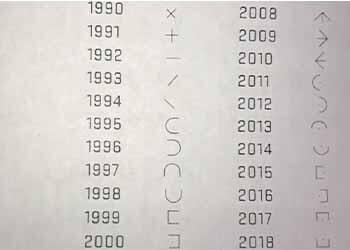
Study the knife’s markings
Examine the blade and handle for any engravings, stamps, or serial numbers. These markings often provide valuable clues about the knife’s manufacturing date and origin. Research Buck knife markings and compare them to online resources or contact Buck Knives directly for assistance.
Analyze the tang stamp
Buck knives typically feature a tang stamp, a mark etched onto the blade near the handle. Tang stamps have changed over the years, so identifying the specific stamp on your knife can help narrow down its age. Research the different tang stamps used by Buck Knives throughout their history to make an educated estimation.
Examine the knife’s features
Buck knives have evolved in design and features over time. Assess characteristics such as the shape of the blade, the type of handle material, and any unique design elements. Comparing these features to known patterns and models can provide insight into the knife’s age.
Seek expert advice
If you’re unsure about dating your Buck knife, consider consulting experts or dedicated knife forums. Knowledgeable collectors and knife enthusiasts can offer guidance and share their expertise based on years of experience with Buck knives.
Remember, dating a Buck knife requires patience, research, and careful observation. By utilizing these methods and resources, you can unravel the captivating history behind your Buck knife and appreciate its significance even more.
Related:
Buck Knife’s Date Code Chart
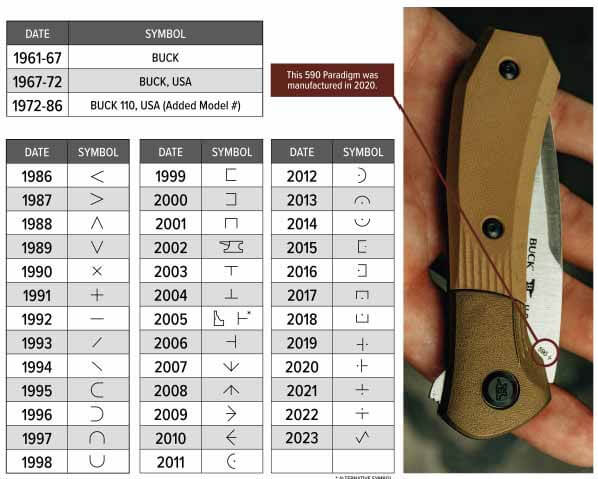
Image Credit: buckknives
Buck Knives used a date code system on their knives between 1986 and 2004. The date code is a series of letters and symbols imprinted on the tang of the blade, near the handle. Each character in the code represents a specific year or range of years.
The following is a basic breakdown of the Buck Knives’ date code chart:
- A single letter from A to Z: Represents the year of manufacture from 1986 to 2004. For example, A corresponds to 1986, B to 1987, and so on.
- A letter followed by a “+” symbol: Represents a five-year span. For example, “B+” would cover the years 1992 to 1996.
- “M” symbol: Indicates the transition from the old stamping method to the new date code system. It was used in 1990 and represents a specific point in that year.
It’s important to note that the date code chart may vary depending on the specific knife model and series. Additionally, after 2004, Buck Knives discontinued the use of the date code system.
For a comprehensive and accurate reference of the Buck Knives’ date code chart, I recommend visiting Buck Knives’ official website or referring to reliable collector guides and forums that specialize in Buck Knives. These sources will provide specific and up-to-date information on deciphering the date codes of Buck knives.
Final Words
In conclusion, Buck Knives has solidified its position as a renowned and trusted name in the knife industry. With a history spanning over a century, Buck Knives has consistently delivered high-quality, durable, and functional knives that cater to a wide range of needs. From the iconic Model 110 Folding Hunter to a diverse lineup of hunting, tactical, and everyday carry knives, Buck Knives combines traditional craftsmanship with modern innovation. The company’s commitment to excellence, attention to detail, and use of premium materials have garnered a loyal following of enthusiasts and collectors worldwide. Owning a Buck knife means owning a piece of American knife-making history, backed by a legacy of reliability and craftsmanship. With each knife, Buck Knives continues to exemplify its commitment to producing exceptional tools that stand the test of time.

